Garden 'feels' through the senses not AI
Students don't need ChatGPT in the LSKG because 'The Garden Box' has the answers
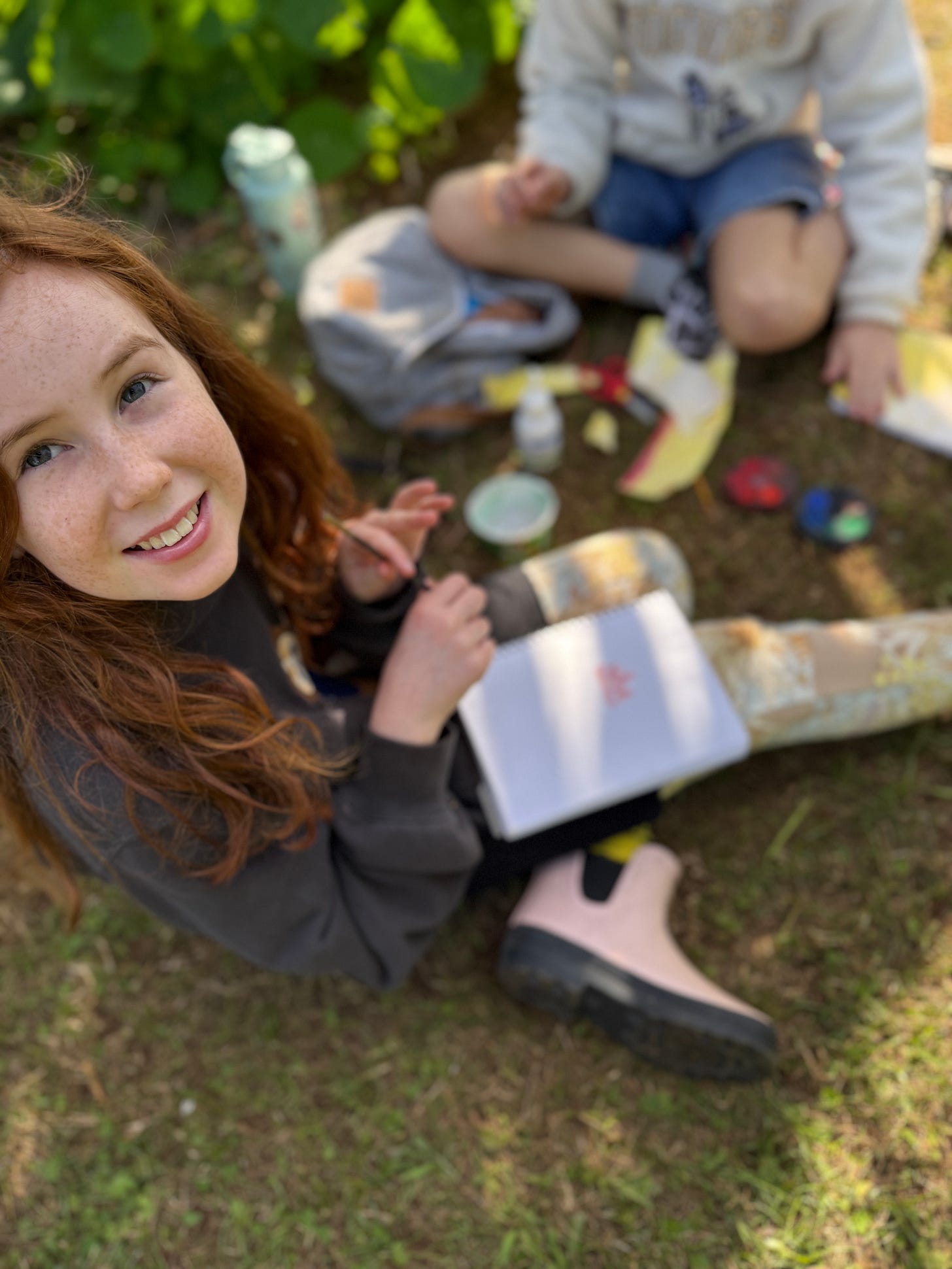
YEAR 4 formed an instant attraction to the mini-beasts they found in the soil. There was ‘Jerry, The Big Fat Rainbow Worm’ and ‘George Junior, the baby one’, as well as ‘Bob, who looked as if he might die’.
Why, as humans, do kids feel the need to personify The Garden’s creatures?
“Because by naming them, comes the desire to learn what they are”, says Tiff our LSKG mentor.
“There is an innate need for connection between children and all ‘tiny life friends’ in our garden.”
The whole purpose of The Living School Kitchen Garden is to enhance the child’s connection with nature, to deepen this relationship, and hence set up a life-long connection with and love for the environment. This is called Biophilia.
The hope is a love of nature, from a young age, will help foster a desire to create solutions to protect the planet.
“It’s a joy to teach,” says Tiff.
“A sense of wonder with the environment is still so alive and fresh in children because the inherent love of the natural world hasn’t been socialised out of them.”
This connection comes from, not only witnessing but, touching, tasting, and smelling nature’s beauty - an experience no electronic device can ever hope to emulate or conjur.
Tiff on Teaching in The Garden - Creative Relational Learning
To lead our inquiry and shape our learning, I was inspired to make a ‘garden box’ as a relational educational tool where students could ask questions, make reflections and give a message to The Living Garden, says Tiff.
The most beautiful questions bloomed out of the bright-eyed, soft-hearted Kindy and Year Ones this third Living School term which was focused on the theme of Life & Living. Each went into the box.
“What happens underground while plants are growing?” - Arlo
“How do plants make food?” - Ritchie
Why do bees like honey? - Freya
Why do flowers have nice scent? - Maddie
Why are praying mantis green? - Neo
Why are leaves green? - Jude
Why do leaves smell? - Sunni
How does garden grow watermelons? - Olive
Why are flowers so beautiful? - Lara
Why do bees like honey? - Lennox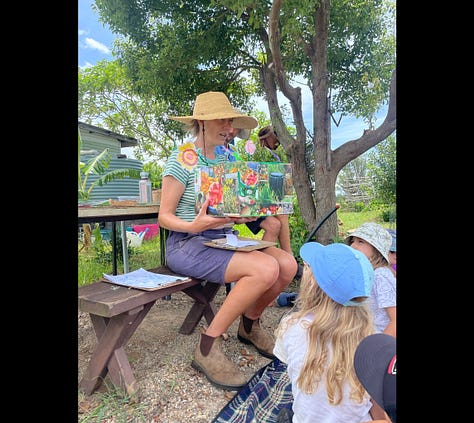
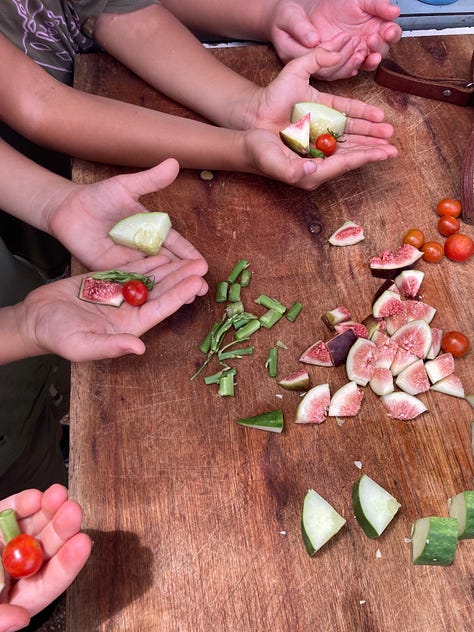
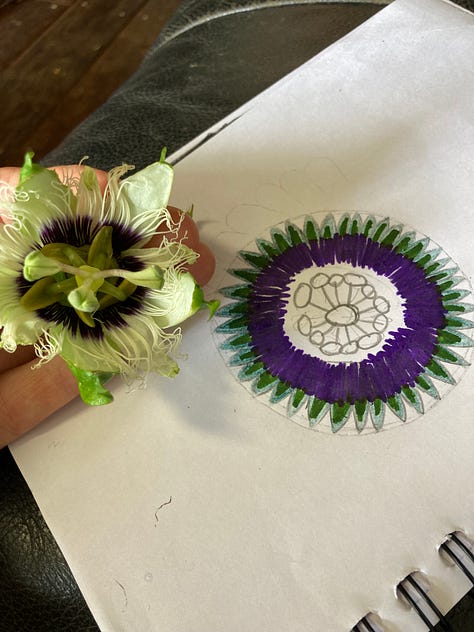
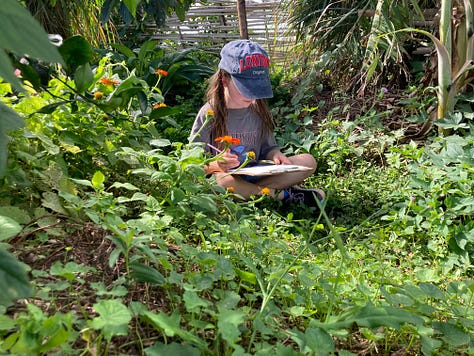

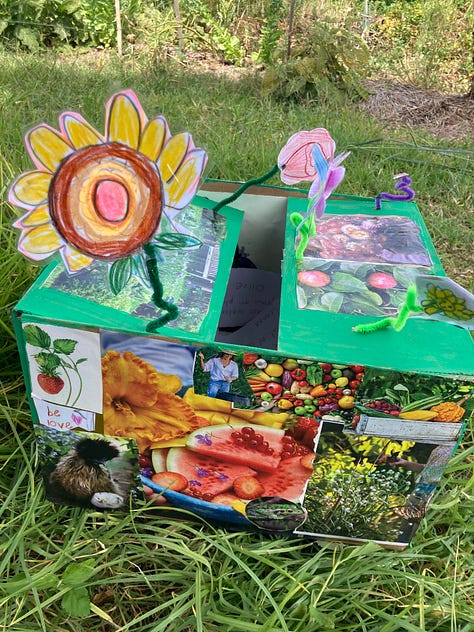
We went about the beds to answer the questions. Soon the garden was revealing her secrets. We caught sunlight in a jar, and tried to catch grasshoppers - although the latter proved to be much harder to catch! says Tiff.
It soon became obvious there was an interdependence going on - the soil, air, sun, living things were all interacting parts. Everything existed together - everything was a part of the whole.
Eyes lit up as the reciprocal nature of the relationships became clear and the students began drawing these connections. Arrows and lines created webs - sun>plant, worm>soil, bee>flower. For the older years, these become flow chart lessons in photosynthesis and pollination.
As one Year 4 student observed:
“The chicken eats a butterfly, the chicken urinates on the ground, this gets evaporated into clouds, the clouds turn into rain and the rain waters a flower, the flower’s pollen helps a beehive grow, we eat honey, then we feed the chicken, and the chicken pees and that’s how the circle goes”
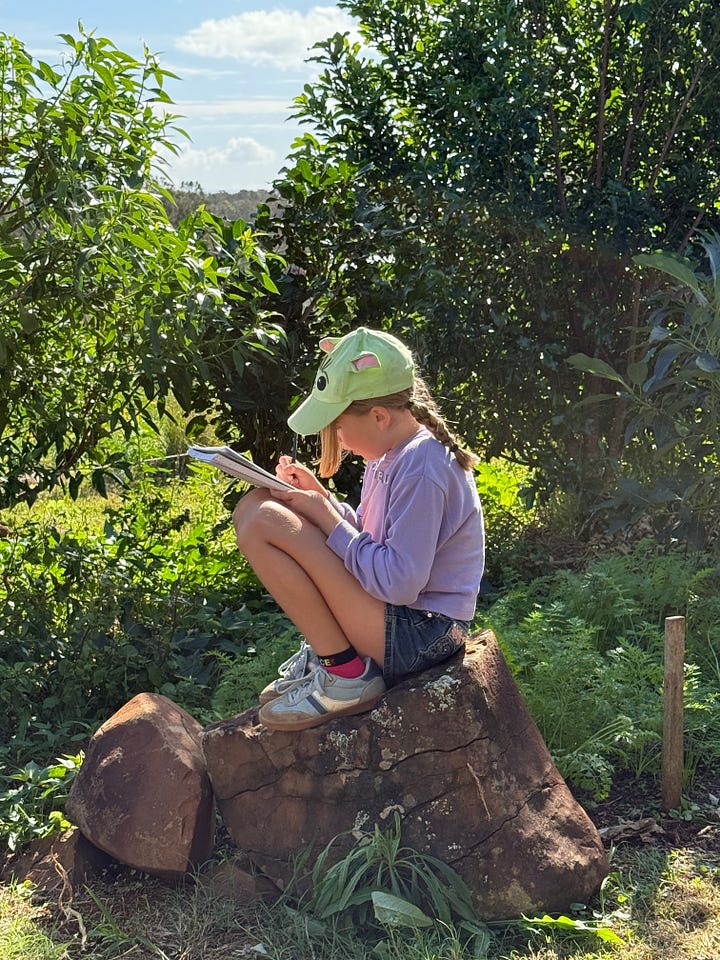
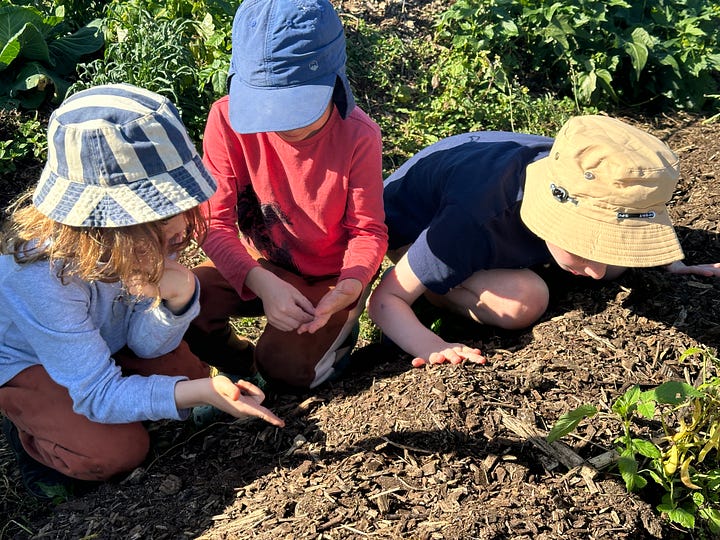
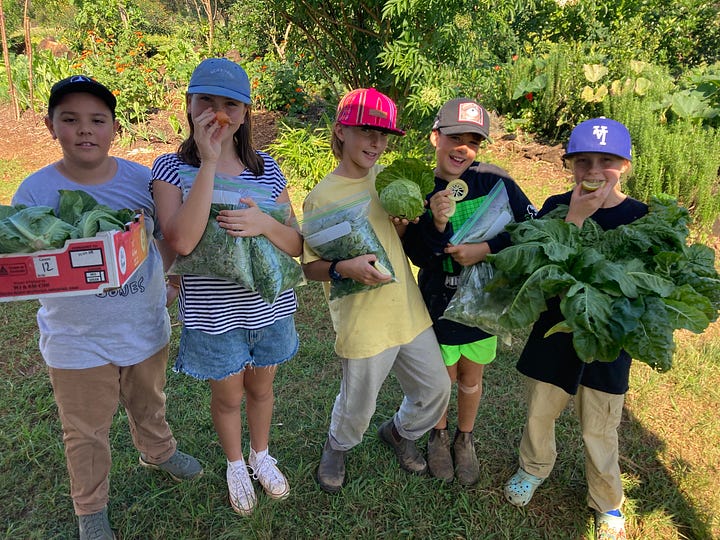
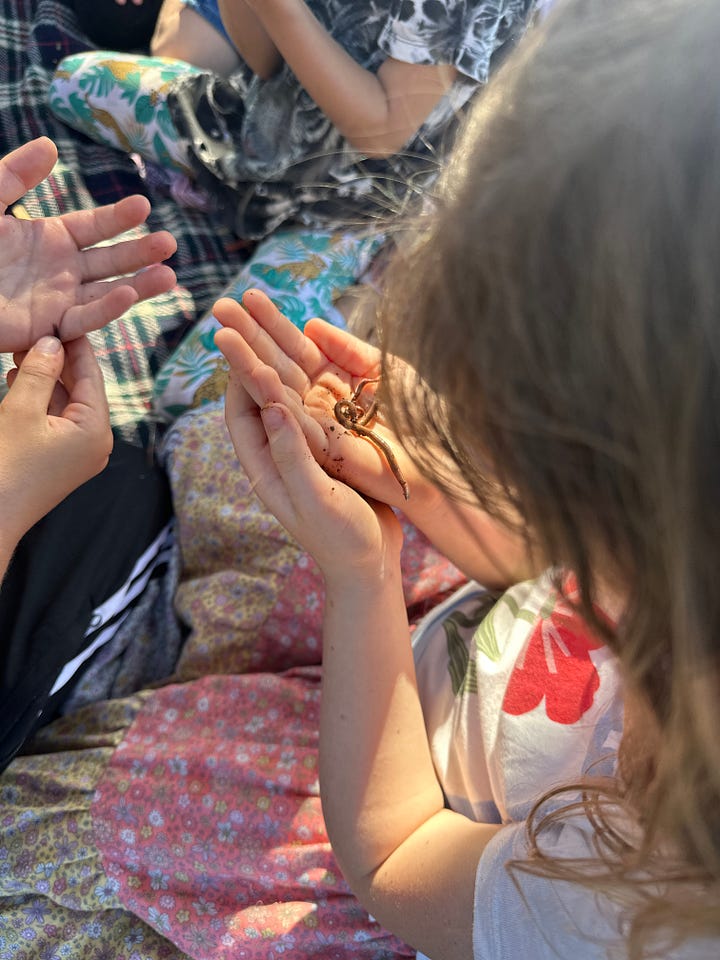
We then planted some delicate broccoli and lettuce seedlings, and practiced the “Give Before We Take” principle in the LSKG.
If you pluck a range of 'weeds' and let them sit in water for many weeks, a lovely green-brown murky weed tea steeps into a delicious fertilizer. The dark liquid concoction is then ladelled into watering cans creating an activity that brings so much delight.
The small gentle tending in watering the young shoots with weed tea and worm juice made for the biggest smiles. It becomes apparent ‘The Give’ nourishes the person practicing almost more than it does ‘The Garden’.
The Year Ones, Twos and Threes quietly then found a spot in the garden, to sit and let themselves be drawn in. Through sketching in The Garden, they embarked on some magical creative exploration. In the afternoon, Middle School students came to join them.
Strawberries, apples, and passion fruit blossoms inspired some. Simple leaves were enough for others. The students related to ‘the feel’ of ‘The Garden’ in abundance. It was just them and the leaf, the flower, the fruit. Truly beautiful.
Cooking in The Garden
This time last year it was the beautiful Trombonchio Squash we were able to harvest for our garden cook-up. We worked in two groups to “Collect, Chop, Cook, Chomp and Clean-up” as we made our ‘Tromboncino Pizzas’. One group worked together to cut the tricky trombone shaped squash- which was then used like a zucchini when young, or like a pumpkin when matured.
“Tastes like a cucumber with no flavour, but flavour” - said one young gardener.
The classes then seared the Tromboncino rounds in oil and parmesan to make the mini pizza bases, while the other group prepared the sauce with herbs and tomatoes from the garden. The mini pizzas were carefully assembled, with bases and sauce, then a sprinkle of cheese melted on top and Voila! Mini Tromboncino squash pizzas! Some students said it was the best pizza they ever had!
This year was much the same with our pumpkins.
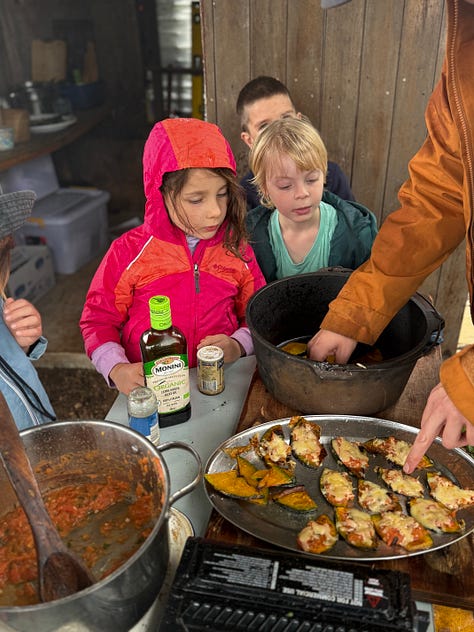
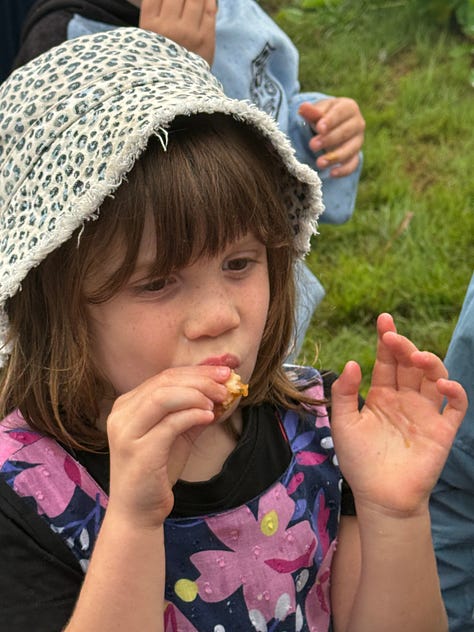
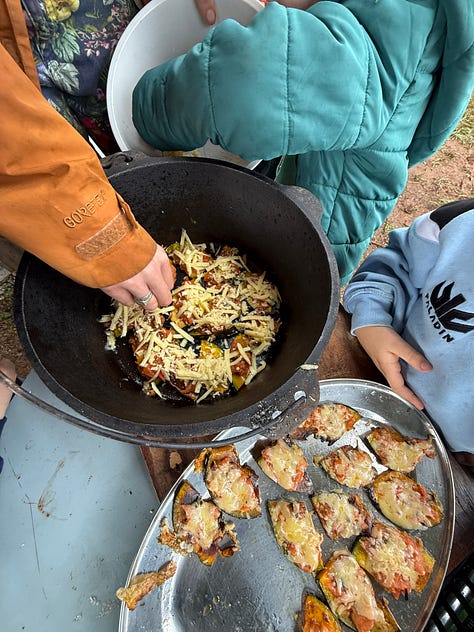
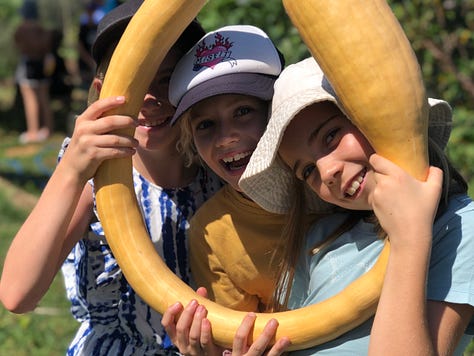

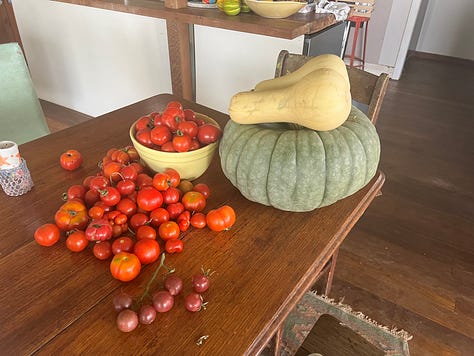

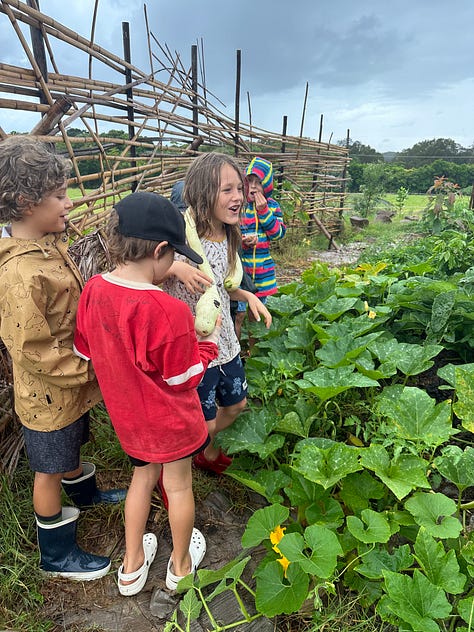
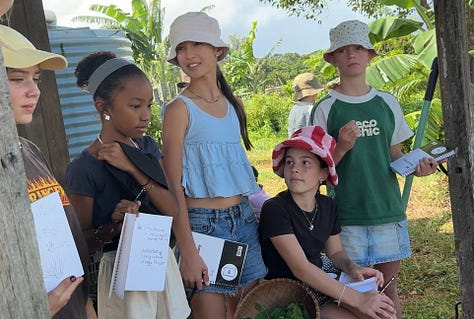
Then in Jabay (our school canteen), Anna peeled, sliced, oiled and seasoned the Trombonchinos and roasted them in the oven. One of our families donated a large bag of pomegranates grown on their property so guess what we did next? We served them up together drizzling the combination with a dressing of tahini, garlic, lemon juice along with the secret ingredient of nutritional yeast flakes (made up of beta-glucans, a special fibre) and some fresh mint.
In her posts to the school community, Anna points to other good sources of super fibre that goes into our canteen food: oats, mushrooms, beans, peas, lentils, broccoli, eggplant, sweet potato, apples, strawberries, prunes & seaweeds.
“Keeping blood sugar levels stable keeps us feeling full longer and without those sugar cravings between meals. It also provides for a deeper sleep and better concentration throughout the day,” says Anna.
Aidan creates garden connection by mimicking a forest ecosystem
The connection of all things in ‘The garden’ can also be found deep below the soil, says Aidan.
He is guided by concepts of Syntropic farming, where a forest ecosystem is mimicked creating a dense planting that occupies different strata.
“As well as shade, another benefit of a system like this is the production of compost in situ. Plants are regularly pruned and the pruned bits are dropped right there to the earth. This slowly decomposes and feeds the soil,” says Aidan.
Strangely, it is through roots that forests and grasslands produce new soil. The plant takes in sunlight and converts it to sugar – something humans can’t do. This sugar is then passed into the soil through its roots. Fungi is attracted to this sugar. The fungi then eats and excretes humus – a pure soil - mining minerals (something plants can’t do), which in turn passes it back to the plant.
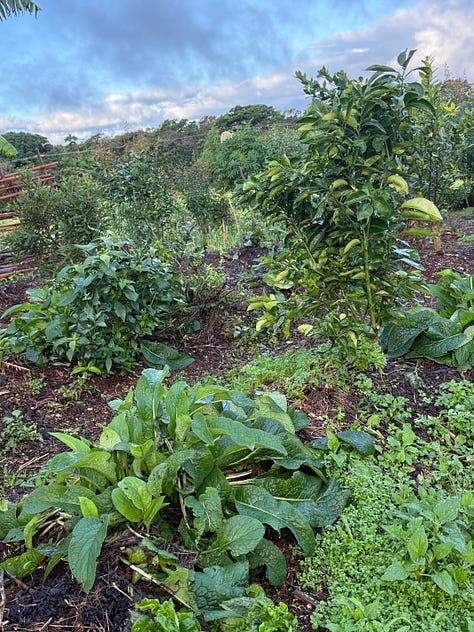
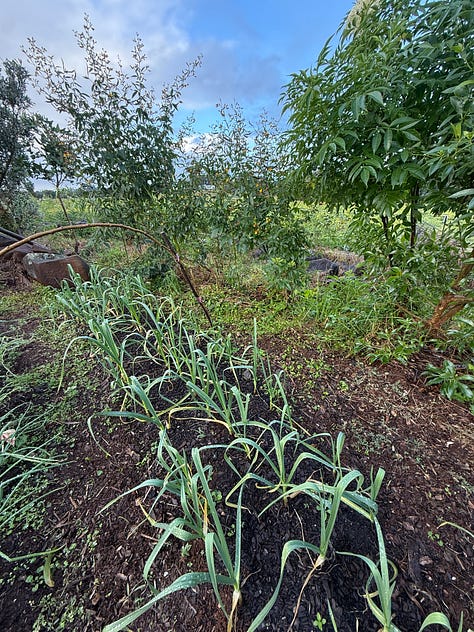
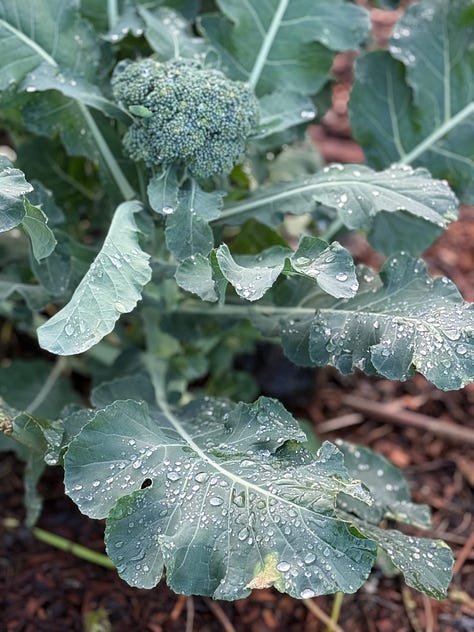
The northern half of the garden is dedicated to growing fruit trees but Aidan has also discovered the turbo-growth of the pigeon pea to enhance the food forest.
Pigeon pea - has very quick growth, lovely soft hanging leaves and is good for chopping back and adding to the soil.
Comfrey –a long taproot to extract nutrients from the depths and draw them into its thick green leaves.
Mulberry – rapid growth and many delicious berries. These ‘pioneer’ species grow quickly and provide shelter for the young fruit and nut trees.


